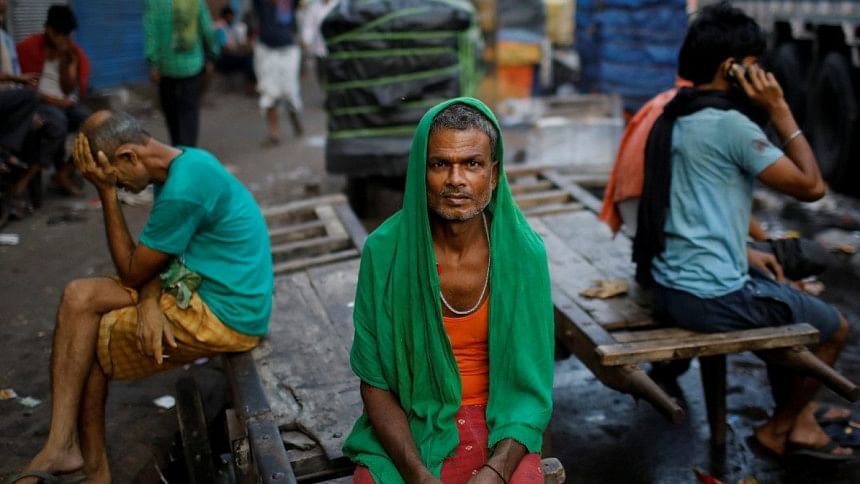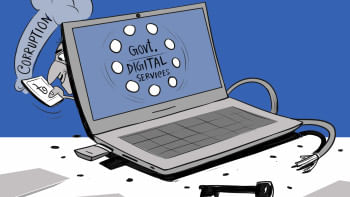India’s self-reliance puzzle: Adding by subtracting?

"If poverty is the mother of crime, lack of intelligence is its father."
- Jean de la Bruyere.
I open this piece with this quote because the pandemic in India has culminated into such a triple crisis – catastrophic loss of lives, economic impoverishment, and governance failure – that some judges in the Supreme Court have called it a crime against humanity. At the same time, the self-reliance drive without much homework reflects lack of intelligence and deliberate inaction. Eliminating the poor sans developing industries is like a self-defeating pursuit of adding to the GNP by subtracting a major workforce especially in the informal sector. In fact, without creating value – whether in medicine, software, energy, manufacturing – where state capitalism matters for investment, as we see in modern China as well as in Vietnam and East Asian miracles, how can we be self-reliant?
Coming to India's recent much-avowed objective of "self-reliance," it is counter-productive to the strategy of overcoming the current pandemic-led recession. With fear of stagflation looming large, such an isolationist strategy might not work. Moreover, the Russia-Ukraine war has added fuel to the fire in the true sense that boiling oil prices has triggered core inflation including food and energy prices. Especially after the grave impacts of Covid-19 and its aftermath making the pandemic-induced trade-offs between health of the economy and that of the citizens so hard, the prospects of recovery and the speed of reforms are gloomy. The room for mitigating the adverse impact without global cooperation is far-fetched.
Now, with the uncertainties of other viruses like monkeypox or some other variants of Covid, the potential for global growth is further aggravated with trade collapse. More than 3,000 tariff escalations will affect 70 percent of import. Every chance of reversing the trend to Licence Raj or restrictive regulatory restructuring would lead to the Hindu rate of growth below four percent and will really be a "Hindutva-led" indoctrination effect. With self-reliance as a goal, trade protectionism would further aggravate the dominant force of global supply chain setting in negative forces against "atma nirbharta." With remote working and the gig economy, SMEs contributing about 30 percent of GDP will suffer, as many are underpaid but overworked despite herd immunity. The indomitable spirit of standing on one's own feet is a golden dream. But in the context of economic policymaking in India, that dream is covered with dark patches of clouds with foreboding of secular stagnation.
It is also true that in today's world – thanks to technological benefits, digitisation and e-commerce – raising barriers is like retreating to the pre-World War I era of mercantilism. If we look back to economic history, import substitution (IS) policy was adopted in many countries – with differences as per individual goals – in the 1950s to 1960s and infant-industry protection was offered for reaping dynamic economies of scale. In the case of South Korea, the IS was adopted for export-promotion (EP) schemes and eventually for export-led growth. India has raised – after achieving export-led growth since 1990s economic reforms under Manmohanomics – the import tariffs and escalated the tariff rates. In fact, shying away from RCEP or any FTA is a threat to self-reliance as India's stellar performance of growth rates in the range of 7 to10 percent was due to the dismantling of Licence Raj, adoption of economic reforms, and changes in institutions accompanying the economic reforms.
Without having a well-developed industrial structure and technological sophistication, the dream of adding value cannot be achieved by subtracting foreign trade components underlying the global value chain unlike China. With Covid-19, and ensuing changes in adoption of technology – such as online modes, rise of the gig economy thanks to automation and digitisation – we can envisage a process of creative destruction where the risk of vanishing sectors looms large as "virtual trade" replaces offline works.
India became a tiger from being an underdog; in order not to become extinct, it needs to be given proper care. The importance of human capital needs to be part of public discussions as quality-adjusted investment rate is a matter of concern. Rather than embracing trendy prescriptions, such as incubators, self-reliance, technology parks, for a head start to becoming "atmanirbhar," financing the "man" is as important as adopting "machines" because, after all, man makes machines with ingenuity.
With complacency gripping the helmsman of our beloved country sipped with nationalism, the clarion call for being self-reliant has boomeranged. Crematoria and hospitals being crowded by ailing and dying patients has triggered doubts about self-reliance or "acchey din (better days)," as the highly infectious religious bigotry causes rampages in India.
India's plan is to build a USD 5 trillion economy in 2025 from the current level of USD 3.1 trillion. The much-hyped "3D" advantage of demographics, democracy, and demand is only populistic as the economy is limping due to decelerating GDP growth, accelerating unemployment (at a record high of 23.5 percent), and inflation marching ahead.
Additionally, the Russia-Ukraine war is a constant threat to the dream of all world leaders and India can never be an exception. Without Keynesian fiscal stimulus, low levels of investment, consumption, and exports along with faulty demonetisation are crippling her. Think about the Indian software sector – almost non-existent till the late 1980s – which grew at an average rate of 30 percent per annum to register exports of USD 12.2 billion in 20 years. The root cause of this abundance of engineers is private investment in human capital along with government support and public sector R&D institutions in Bangalore, and scientific infrastructure and diasporic spillovers in a high-tech cluster. Co-creating markets for innovation-led inclusive and sustainable growth is important.
With supply chains being disrupted due to Covid shock, IS policy will deal another blow further reducing the prospect of export and hence, the dream of self-reliance. The key lies with the Keynesian macroeconomics taught in intermediate courses. Boosting domestic demand should emerge as an organic policy intervention along with careful opening up. East Asia is a glaring example of this balancing where, even with high stagflationary chances and inflation hovering around 8 percent globally, the inflation is within target rates.
It's not about leaning left or right. The boot of leadership should be on the "right" foot so that the monopolistic and corrupt elite does not mould law and economics to their own advantage. We should be careful about the populist right, whether they are "right" or "wrong," and then leave those right for even a socialist left if and when the left is "right." "All great truths begin as blasphemies," as Bernard Shaw said, so we must not at least stop telling the truth. And as Robert Low (Chancellor of the Exchequer, 1868-73) said: "We must educate our masters." That's the top priority before the next democratic process of electing leaders rolls out.
Gouranga G Das is a professor of economics at Hanyang University in Seoul, South Korea.

 For all latest news, follow The Daily Star's Google News channel.
For all latest news, follow The Daily Star's Google News channel. 







Comments